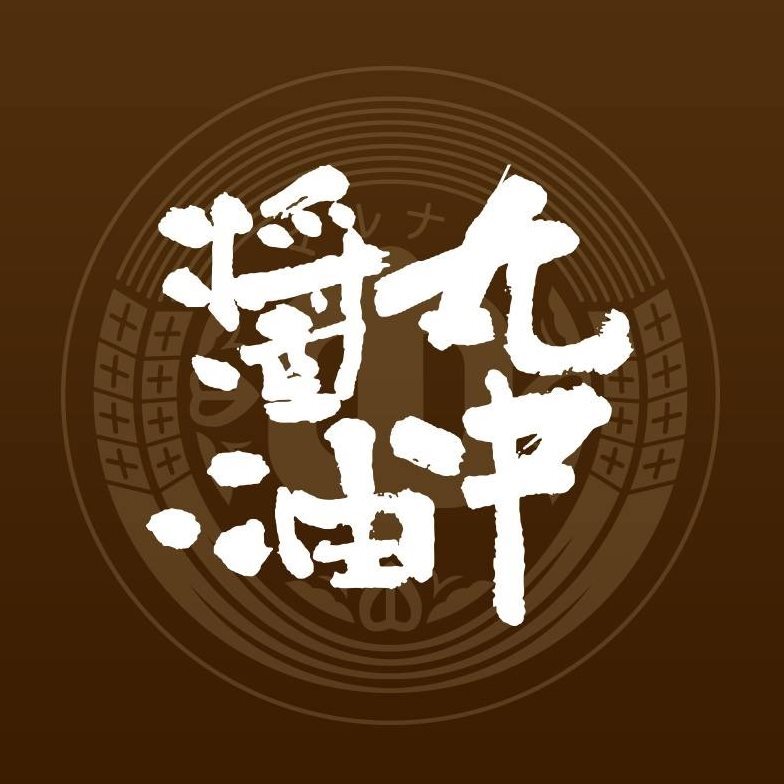
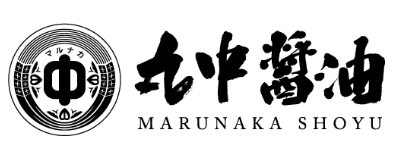
※The use and reproduction without authorisation of the graphic contents,photographs,and texts of this site is strictly forbidden.
Many of the tools and equipment once used by breweries to produce shoyu, or soy sauce, can be found on display in historical museums across Japan. At Marunaka Shoyu, however, these same tools and equipment are masterfully employed, backed by the belief that perfection comes through continuous involvement, not automation.
While there are a number of well-established soy sauce manufacturers in Japan, Marunaka Shoyu is one of the few remaining breweries still dependent on traditional practices and instruments. For this reason, the breweries of Marunaka Shoyu have been recognized by the Japanese government as a National Tangible Cultural Property.


The production of soy sauce at Marunaka Shoyu is a methodical, three year ordeal, during which time artisan brewers are involved on a daily basis. In the absence of modern monitoring equipment, brewers are challenged to keep the process moving forward, relying upon their senses and experience to direct the operation.
Koji is the Japanese term referring to the mix of microorganisms essential to the brewing of soy sauce. For generations, these koji have lived in the wooden vats at the Marunaka Shoyu brewery, being cared for by the brewers, untouched by artificial methods or manipulation. Each wooden vat contains a unique blend of koji, differing from that of the neighboring vats. Only through the blending of the individual batches is Marunaka Shoyu's true flavor established.
The area around Marunaka shoyu, was sandwiched between the Suzuka Mountains and the Lake Biwa, in the east of Shiga prefecture, middle of the Japan.
The climate has played a large role in naturally shaping the unique blend of koji used at Marunaka Shoyu, because the presence of nearby the lake helps provide a humid environment to the region and, in winter, it makes a heavy snowfall which create the conditions for a successful brewing process.
It requires time for aging to produce the real soy sauce. So our product is tasteful even adding some water with a little salt. And the Marunaka may have different variations of tastes and aromas of the sauce, without the professional mix technique that has been required for the same taste and color.
Anyway, it is all that Marunaka Shoyu's production relies three important phases for over 200 years.
During this process, hemp bags filled with salt are placed within wooden vats containing water, allowing the salt to dissolve slowly over time. Shiotsuri, which literally means "salt hanging", gradually increases the salt content of the water, activating the koji living in the vats and readying them for the next phase.


During this period, brewers rely heavily on their skill and knowledge of the craft, constantly interracting with the product to control the temperature and fermentation process.
Through the use of a kaibou, brewers carefully blend the moromi, or mixture of soybeans, wheat and salt, within the wooden vats. As the koji contained in the vats begin interacting with the moromi, brewers closely monitor the fermentation process to ensure consistency. Twice a day, each vat is attended to by a brewer, at which point they deftly utilize their kaibou to enliven the mixture, releasing built-up gases and reintroducing oxygen into the moromi. Throughout this stage, artisans create the ideal fermentation environment, allowing the microorganisms within the koji to thrive and flourish.
As with all processes at Marunaka Shoyu, this step is entirely reliant on the technique and experience of the brewer, and no automation or modern equipment is utilized.
As the moromi is removed from the vats, hemp bags are filled with the mixture and stacked upon one another. Utilizing gravity and the compounded weight of the bags, the moromi is filtered through the hemp over the course of a week. The hemp bags, most of which have been in use for many years, filter the moromi slowly and naturally, separating the liquids from the solids. Then the bags may be put under the weight of wood and expects the drops filter in a natural way. In the finishing filtration steps, the bags are pressed by hand, removing the moromi from the final product.
The result: an exceptional shoyu unlike any other.

I will admit as a member of our association who may spend all his energy in the production of healthy and genuine foods in his all life. I think that the real mission of the Marunaka Shoyu is to inherit the production to their vision, skill, taste and our traditions, to the future generations.
I hope that one will taste this soy sauce carefully, because this is the original.

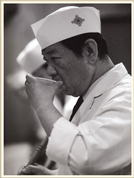
“The global search for healthy and quality ingredients coincides with the spread of Japanese culinary culture, to which soy sauce is indispensable. When I was looking for a traditional soy brewery for my recipes, I came across Marunaka and I've been using their soy sauce ever since. For us cooks, the best ingredients are what our taste buds respond to.”
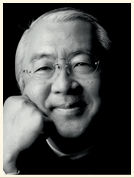
“Marunaka Shoyu has continued to unwaveringly adhere to it's over 200 year old production methods, and could well be said to play an important supporting role in the continued protection and adherence to the traditions of Japanese cuisine, which was recently registered as a World Intangible Cultural Heritage. Due to the time and effort is put into their production, truly good products yield remarkable and distinctive qualities, even if only used in a supporting role, and for this reason I believe Marunaka Shoyu is an excellent product which we must continue to protect and foster in order to continue to convey Japanese food culture to future generations worldwide.”
At the end of World War II, Japan's economy experienced rapid growth which continued for quite some time. In the mid-1990's, however, the country was faced with economic downturn, resulting in a shift in Japanese lifestyle and demand. Across all industries, manufacturers began cutting corners and reducing costs, most often at the expense of quality. In the soy sauce industry, the brewing period was shortened through the introduction of modern machinery, and low quality raw materials were imported from overseas.
The age of mass-produced soy sauce had begun.

Meanwhile, for us at Marunaka Shoyu, we continued to brew our shoyu the traditional way, as we always have. This dedication to our art was not easy, as we continued to see our sales and manufacturing output decline. The increasing number of empty wooden casks in our brewery served as a constant reminder of Japan's changing tastes, and an industry that had permanently transformed. Marunaka Shoyu was dealt another blow after the Great Hanshin-Awaji Earthquake of 1995. Our brewery and storehouse, which was built during the Edo Period (1600 – 1800), suffered structural damage and was no longer safe. Modern reconstruction methods could not be used to rebuild the brewery as doing so would damage the tools and equipment that make our product so unique. Under great financial strain, the company was now faced with some major decisions.

In the early 1990's, I began working at a leading soy sauce manufacturer in the Tokyo area. When I first started working there, I was amazed by the modern process of soy sauce manufactuing. It wasn't long, however, before I began to develop a sense of uneasiness. Was this even soy sauce? The lack of human involvement, the life-less machines, the inert stainless steel barrels… all of these had me questioning my own choices and career path. I consistently found my mind wandering back to my childhood spent in the Marunaka Shoyu brewery, where the brewing craftsman worked in tandem with nature, harnessing the power of the koji that had been living in our facility for generations. The pride and love that everyone involved in the process of creating Marunaka Shoyu was undeniable. I thought to myself "This is what soy sauce is! What have I done?!?!" I had spent too many years distracted by the modern marvels of today's manufacturing process and had forgotten the importance of quality and true craftsmanship. So, in 1999, with my passion renewed, I decided to go back to my home town in Marunaka Shoyu Shiga and rebuild the company.
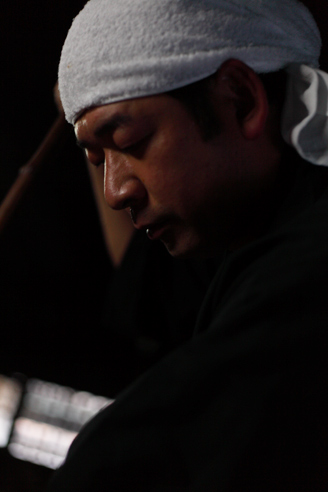
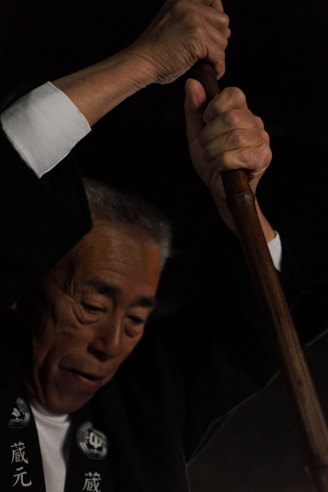
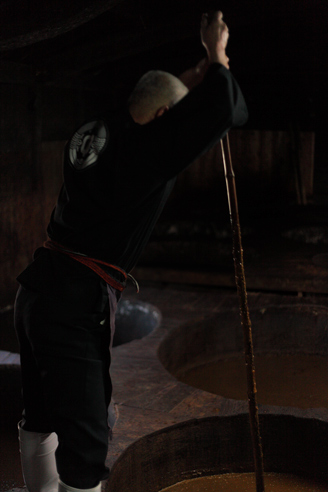
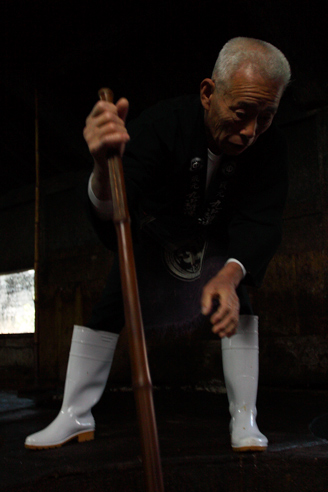
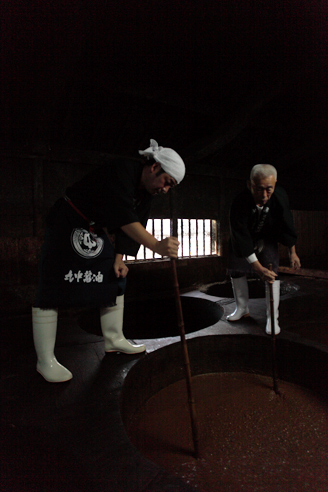
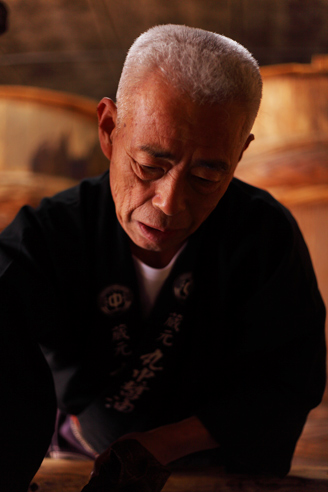
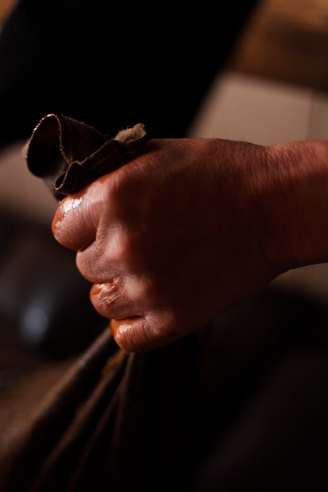
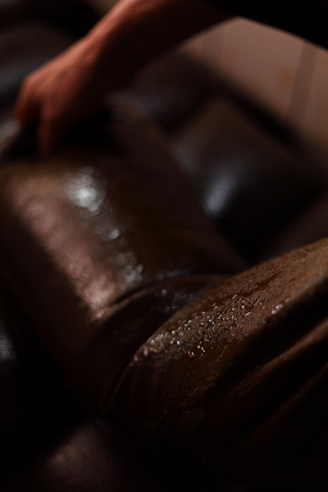

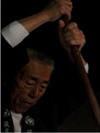

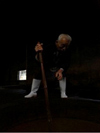

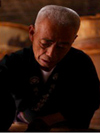

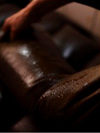
↑Please click here
In 2008, seismic reconstruction on the brewery and warehouse began. As specialized technology and methods were needed to fix the grounds without compromising the priceless equipment, we enlisted the help of a miyadaiku team from Kyoto, who were experts in the reconstruction of precious shrines and temples. For the cost of rebuilding our old warehouse we could have built two new warehouses, but our commitment to tradition was unwavering.

Since then, it has not been an easy road by any means, but thankfully, customers sharing our passion for excellence have continued to support our brand. The patronage from the culinary arts community has been incredible, and with every review and mention of our shoyu in the media, we continue to see our brand grow in the right direction. At Marunaka Shoyu, we consider it our national duty to maintain the brewing practices of old Japan. Each and every one of our staff members is dedicated to our mission, and we embrace the opportunity to serve new customers, not only in Japan, but around the world!
Thank you.
Masakazu Nakai, eighth-generation hereditary head of Marunaka Shoyu


Each morning, the head of the household serves an alter with this bowl. After serving, he drinks from the bowl, intending to confirm the quality of the water, and to wish a successful day of brewing shoyu.

"I'm always seeking for excellence raw materials and ingredients that may give a life to my dishes ... recently it was Marunaka Shoyu that I pleasantly discovered.
This soya sauce has a rich, enveloping and persistent taste over time, having produced even today by Nakai family according to the traditional Japanese methods, and its unique features will make it an ideal ingredient for excellent dishes."
A real soy sauce will make the best use of cooking soy beans and wheat, then, it will enhance dish's value. Marunaka soy sauce has "umami" flavor components, acid taste and sweet taste. "Umami" flavor components are based on amino acid, help us taste savory. These components are harmonized each other, and make you feel smooth on your tongue because of the genuine of our soy sauce. For instance, in macrobiotics people take the warm mixture as a medicine.
When you taste the Marunaka Shoyu, the depth and good sharp aftertaste will be characteristic. We have never treated the Moromi in a mechanical and automatic way. The artisan may monitor and follow the processes of fermentation of each brewer, which will be its own unique taste and flavor, different from each other.

Marunaka soy sauce has been brewed in the same traditional cellars for over 200 years. We use 100% natural ingredients, grown here in Japan, and our soy beans have been coming from the same farm since 1963. At the brewery, the wooden vats where the shoyu is fermented breathe life into every batch. Each cask contains it's own set of microorganisms, or koji, and impart unique traits and characteristics before being blended together in the end to create Marunaka Shoyu's distinctive taste.
The breweries of Marunaka Shoyu have been recognized by the Japanese government as a National Tangible Cultural Properties.
We use chemical-free soy beans and wheat made in Japan. For instance, we have been working with the same soy farmer since 1963.

Because of its delicate fragrances and gustative qualities, you can taste our shoyu as you would taste a fine wine.
For a better tasting experience, please use a red wine glass and try to avoid as much as possible metal made containers.
You will also need hot and sweet water(or mineral water) sweet water (or mineral water).
Use hot water then successively still water to reveal the different fragrances and texture of Marunaka shoyu. If possible, use two glasses to compare more efficiently.
Once you will have understood the gustative specificities of our shoyu in the simplest way, you will be able to use it freely in your cuisine.
For example, you may put a drop of our sauce on the hot dishes or on a poêlé, and can be used to sear the surface of the material.
Please note enough the degree of the fire when cooking.
The Shoyu can give to your dishes various aromas and flavors, and it is important to pay attention to the time when the sauce will be added; usually the light dose of the Shoyu may be enough.
If you will use the Shoyu simply as a sauce, you may feel its best natural taste.
Also you may use the Shoyu
but also for any delicious dishes
Due to it's delicate fragrance, please treat this shoyu as you would a fine wine. Store in a cool, dark place, preferably a refrigerator.
The Marunaka Shoyu do not like much change in temperature.
Close the bottle cap, and store the sauce in a cool and dark place, away from direct heat or sunlight.
The ancient process of production of the sauce is based on the microorganisms for more than 200 years in our breweries, which should ever be present.
In order to protect the delicate condition, tours and any Workshop are unavailable in our breweries Kura.